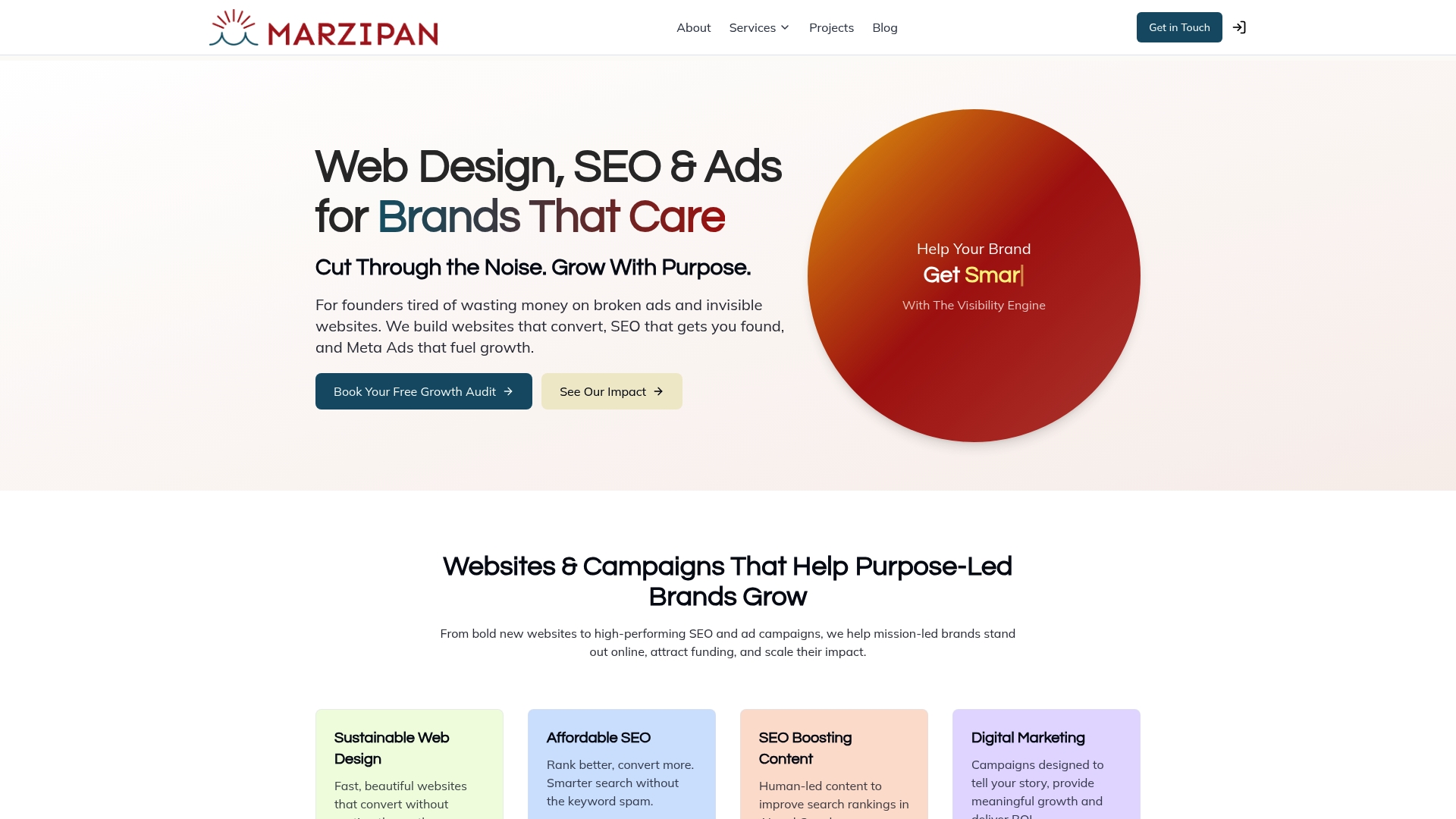7 Powerful Brand Storytelling Examples to Inspire You
Brand storytelling keeps popping up everywhere and for good reason. Research shows that storytelling triggers emotional responses that significantly shape brand perception. Most people think advertising is about clever slogans and product photos. There is something much deeper happening. The strongest brands do not just push products. They share stories that connect with people’s real lives and feelings, turning everyday consumers into loyal supporters.
Table of Contents
- Understanding The Importance Of Brand Storytelling
- Example 1: Nike’s ‘Just Do It’ Campaign
- Example 2: Coca-Cola’s Share A Coke Initiative
- Example 3: Airbnb’s ‘Belong Anywhere’ Narrative
- Example 4: Apple’s ‘Think Different’ Philosophy
- Example 5: Always’s #LikeAGirl Campaign
- Example 6: Dove’s Real Beauty Story
- Example 7: Guinness’ ‘Made Of More’ Campaign
Quick Summary
| Takeaway | Explanation |
|---|---|
| Effective brand storytelling builds emotional connections. | Businesses can create deeper relationships with their audiences by using narratives that resonate on an emotional level. |
| Authenticity fosters brand trust and loyalty. | Authentic storytelling establishes trust, encouraging consumers to engage with and advocate for the brand. |
| Personalisation enhances consumer experience. | Tailoring narratives to highlight individual experiences can transform a product into a unique, emotionally engaging story. |
| Stories can reshape social narratives and empower. | Campaigns like #LikeAGirl demonstrate how storytelling can challenge stereotypes and drive social change. |
| Creativity in storytelling positions brands as cultural leaders. | Innovative campaigns elevate brand perception by aligning with broader social movements and inspiring consumers. |
1: Understanding the Importance of Brand Storytelling
Brand storytelling represents a strategic communication approach that transforms traditional marketing into a compelling narrative experience. By weaving emotional connections and authentic messages, businesses can engage audiences far beyond simple product descriptions.
At its core, brand storytelling is about communicating core values, mission, and human experiences that resonate with target audiences. Companies that master this technique create narratives that transcend typical advertising, establishing deeper connections with consumers.
According to research published in PLOS ONE, storytelling activates powerful emotional responses that significantly influence brand perception. Key advantages of effective brand storytelling include:
- Building genuine emotional connections with audiences
- Establishing brand authenticity and trust
- Differentiating from competitors through unique narratives
- Increasing audience engagement and retention
Successful brand storytelling requires understanding your audience’s aspirations, challenges, and motivations. It involves crafting narratives that go beyond product features and speak to broader human experiences. Whether highlighting company origins, showcasing customer journeys, or demonstrating social impact, effective stories create memorable brand interactions.
The most powerful brand stories are not about selling but about sharing meaningful experiences. They invite audiences to see themselves within the narrative, creating an emotional investment that transcends traditional marketing approaches. By prioritising genuine storytelling, brands can transform passive consumers into engaged community members who feel personally connected to the organisation’s mission and values.
2: Example 1: Nike’s ‘Just Do It’ Campaign
Nike’s ‘Just Do It’ campaign represents a masterclass in brand storytelling that transcends traditional advertising by transforming a simple slogan into a powerful cultural movement. Launched in 1988, this campaign revolutionised how brands communicate with audiences by presenting an emotionally charged narrative of human potential and resilience.
The campaign’s brilliance lies in its universal message of empowerment, encouraging individuals to overcome personal limitations and pursue ambitious goals. Nike did not merely sell athletic shoes but inspired a mindset of determination and courage.
According to research from the University of New South Wales, Nike’s approach demonstrates the critical importance of authentic brand activism. The campaign’s key strategic elements include:
- Creating an emotionally resonant narrative
- Challenging societal expectations
- Connecting with audiences beyond product features
Particularly notable was Nike’s 2018 campaign featuring Colin Kaepernick, which showcased the brand’s commitment to social justice and athlete advocacy. This bold move reinforced Nike’s storytelling approach by aligning the brand with meaningful social conversations.
The campaign’s success stems from its ability to transform a simple athletic wear brand into a symbol of human potential. By consistently telling stories of athletes overcoming obstacles, Nike positioned itself not just as a product manufacturer, but as a champion of individual achievement and societal progress.
Through ‘Just Do It’, Nike demonstrated that powerful brand storytelling is about creating an emotional connection that inspires and motivates, turning consumers into passionate brand advocates who see themselves reflected in the narrative.
3: Example 2: Coca-Cola’s Share a Coke Initiative
Coca-Cola’s ‘Share a Coke’ campaign represents an ingenious approach to brand storytelling that transformed a global product into a deeply personal experience. By replacing its iconic logo with individual names, the brand created a powerful emotional connection with consumers that went far beyond traditional marketing strategies.
Launched initially in Australia in 2011, the campaign invited people to find bottles with their own names or those of friends and family. This simple yet brilliant concept encouraged social interaction and personal sharing, turning each Coca-Cola bottle into a unique storytelling medium.
According to research from the Interactive Advertising Bureau, the campaign’s strategic elements included:
- Personalising a mass-market product
- Creating shareable moments
- Encouraging social media engagement
- Generating word-of-mouth marketing
The campaign’s success stemmed from its ability to make consumers the protagonists of their own stories. By featuring popular names on bottles, Coca-Cola transformed a simple beverage into a conversation starter, a gift, and a means of personal expression.
Moreover, the initiative demonstrated the power of user-generated content long before social media became ubiquitous. People began sharing photos of bottles with their names, creating organic marketing that spread globally. The campaign turned consumers from passive recipients into active participants in the brand’s narrative.
Ultimately, ‘Share a Coke’ showcased how brand storytelling can humanise a global product, making it feel intimate and personal. By inviting people to see themselves within the brand’s story, Coca-Cola created an emotional connection that transcended traditional advertising approaches.
4: Example 3: Airbnb’s ‘Belong Anywhere’ Narrative
Airbnb’s ‘Belong Anywhere’ narrative represents a revolutionary approach to brand storytelling that transformed travel from a transactional experience into a deeply personal journey of human connection. By reframing accommodation as an opportunity for cultural immersion and genuine belonging, Airbnb created a narrative that resonated far beyond traditional hospitality marketing.
The brand’s storytelling strategy focused on presenting travel as more than just visiting a location, but as an opportunity to experience life like a local. This approach challenged conventional tourism paradigms by positioning travelers as temporary community members rather than mere tourists.
According to research from Curtin University, Airbnb’s narrative appeals to travelers seeking unique and personalized experiences. The campaign’s core strengths include:
- Emphasising human connection over transactional exchanges
- Celebrating cultural diversity and local experiences
- Positioning travelers as temporary community members
- Creating emotional resonance through personal storytelling
By showcasing real host and traveler stories, Airbnb transformed its platform from a simple booking service into a global storytelling platform. The narrative humanised travel, presenting each stay as an opportunity for meaningful cultural exchange and personal growth.
The ‘Belong Anywhere’ campaign went beyond marketing by creating a global community united by curiosity and openness. It invited travelers to see themselves as part of a larger, interconnected world where differences are celebrated and genuine human connections transcend geographical boundaries.
Ultimately, Airbnb demonstrated that powerful brand storytelling is about creating an emotional ecosystem that transforms how people perceive not just a service, but an entire experience of human interaction and cultural exploration.
5: Example 4: Apple’s ‘Think Different’ Philosophy
Apple’s ‘Think Different’ campaign represents a watershed moment in brand storytelling, transforming the technology company from a mere product manufacturer into a cultural movement celebrating creativity, innovation, and individual potential. Launched in 1997 during a critical period of corporate restructuring, the campaign transcended traditional advertising by positioning Apple as a platform for human imagination.
The narrative celebrated historical innovators and rebels who challenged conventional thinking, subtly drawing parallels between these iconic figures and Apple’s own brand ethos. By featuring individuals like Albert Einstein, Mahatma Gandhi, and Martin Luther King Jr., Apple created a powerful metaphorical connection between technological innovation and human progress.
According to research from Swinburne University of Technology, the campaign redefined Apple’s brand image by emphasising core values of creativity and non-conformity. Key strategic elements included:
- Celebrating individual creativity
- Challenging established paradigms
- Creating emotional resonance beyond product features
- Positioning technology as a tool for human expression
The campaign’s genius lay in its ability to transform Apple from a computer company into a symbol of human potential. By aligning the brand with revolutionary thinking, Apple invited consumers to see themselves as part of a broader narrative of innovation and personal empowerment.
Moreover, ‘Think Different’ demonstrated that powerful brand storytelling is not about selling products, but about inspiring people. It communicated that Apple’s mission extended far beyond technological devices – it was about enabling human creativity and challenging the status quo.
Ultimately, the campaign established a profound emotional connection with consumers, positioning Apple not just as a technology company, but as a catalyst for human imagination and progressive thinking.
6: Example 5: Always’s #LikeAGirl Campaign
Always’s #LikeAGirl campaign represents a groundbreaking example of brand storytelling that transformed a negative social stereotype into a powerful message of empowerment. By challenging the derogatory phrase ‘like a girl’, the campaign addressed deep-rooted societal perceptions about gender and female capability.
Launched as a video campaign, the narrative exposed how the phrase ‘like a girl’ had been historically used to diminish female performance and confidence. The brand masterfully turned this negative expression into a celebration of female strength, demonstrating how brand storytelling can drive meaningful social discourse.
The campaign’s approach went beyond traditional advertising by creating a narrative that challenged existing social narratives. By highlighting the confidence erosion young girls experience during puberty, Always transformed a simple hygiene product advertisement into a movement supporting female self-esteem.
According to research highlighting educational respect initiatives, campaigns like #LikeAGirl are crucial in challenging systemic gender stereotypes. Key strategic elements included:
- Exposing unconscious gender bias
- Reframing negative social language
- Empowering young women
- Creating an emotional connection beyond product marketing
The video featuring young people’s interpretations of ‘like a girl’ powerfully illustrated how societal perceptions are learned and can be unlearned. By the video’s conclusion, participants redefined ‘like a girl’ as a statement of strength, skill, and pride.
Ultimately, Always demonstrated that brand storytelling can be a powerful tool for social change. The campaign transcended product marketing, creating a narrative that challenged stereotypes and inspired a global conversation about gender perception and female empowerment.
7: Example 6: Dove’s Real Beauty Story
Dove’s Real Beauty campaign represents a revolutionary approach to brand storytelling that challenged deeply entrenched beauty standards and transformed societal conversations about body image and self-perception. By featuring women of diverse body types, ages, and ethnicities, Dove disrupted traditional marketing narratives that had long perpetuated unrealistic beauty ideals.
The campaign’s core strategy was to create a narrative that celebrated authentic beauty, moving beyond conventional advertising to become a powerful social movement. Dove positioned itself not just as a beauty product manufacturer, but as an advocate for women’s self-esteem and positive body image.
According to research from UNSW BusinessThink, the campaign sparked widespread media discussions about beauty standards. Key strategic elements included:
- Challenging narrow beauty representations
- Promoting body diversity and inclusivity
- Creating emotional resonance beyond product marketing
- Empowering women to redefine beauty standards
The campaign’s photographs and videos featured real women with diverse body shapes, challenging the narrow beauty standards prevalent in advertising. By showcasing unretouched images, Dove invited viewers to reconsider their perceptions of beauty and self-worth.
However, the campaign was not without complexity. While celebrated for its progressive approach, it also faced criticism for its occasional missteps in representation, highlighting the nuanced challenges of authentic brand storytelling.
Ultimately, Dove demonstrated that powerful brand narratives can transcend product promotion. By creating a story that resonated with deep human experiences of self-acceptance and dignity, the brand established a profound emotional connection with its audience.
8: Example 7: Guinness’ ‘Made of More’ Campaign
Guinness’ ‘Made of More’ campaign represents an extraordinary approach to brand storytelling that transcended traditional alcohol marketing by celebrating human character and extraordinary moments of genuine compassion. Unlike conventional beer advertisements focusing on revelry or masculinity, Guinness crafted narratives that highlighted deeper human values of friendship, resilience, and solidarity.
The campaign’s most notable storytelling approach involved creating emotional advertisements that portrayed profound human experiences. These narratives went beyond product promotion, positioning Guinness as a brand that understood and respected complex human relationships and personal integrity.
By focusing on powerful storytelling, Guinness transformed from a mere beverage brand to a platform for exploring meaningful human connections. The campaign consistently showcased stories of extraordinary individuals who demonstrated remarkable courage, empathy, and character.
The campaign’s key strategic elements included:
- Exploring deep human emotional experiences
- Challenging traditional masculine stereotypes
- Creating narratives that inspire and move audiences
- Connecting brand identity with genuine human values
One particularly memorable advertisement featured a group of wheelchair basketball players, highlighting teamwork, friendship, and mutual support. This narrative powerfully communicated that true strength lies not in physical ability, but in emotional resilience and mutual understanding.
Guinness demonstrated that brand storytelling can be a powerful medium for communicating values beyond product features. By choosing narratives that celebrated human dignity and complex emotional landscapes, the brand created a profound emotional connection with audiences.
Ultimately, the ‘Made of More’ campaign showed how brands can elevate storytelling from mere marketing to a genuine exploration of human experience, transforming consumer perception through authentic, emotionally resonant narratives.
Below is a comprehensive table summarising the core brand storytelling strategies, examples, and outcomes discussed throughout the article for easy reference and implementation.
| Brand/Example | Storytelling Approach | Key Message/Outcome | Impact on Audience |
|---|---|---|---|
| Nike ‘Just Do It’ | Emotionally charged, universal empowerment narrative | Overcoming personal limits, inspiring resilience | Loyalty, brand seen as symbol of human potential |
| Coca-Cola ‘Share a Coke’ | Personalisation, user-generated content | Making consumers protagonists in their own stories | Engagement, shareability, personal connection |
| Airbnb ‘Belong Anywhere’ | Human connection, cultural immersion | Travel as personal growth, belonging in new communities | Emotional resonance, redefinition of travel |
| Apple ‘Think Different’ | Celebrating innovation and creativity | Technology as a tool for non-conformity and human imagination | Deep brand loyalty, cultural movement |
| Always #LikeAGirl | Challenging stereotypes, reframing negative language | Empowerment, positive gender narratives | Social change, emotional engagement |
| Dove Real Beauty | Inclusivity, challenging beauty standards | Authenticity, celebrating diverse beauty | Widespread conversation, brand advocacy |
| Guinness ‘Made of More’ | Human values, emotional storytelling | Compassion, friendship, challenging masculine stereotypes | Seen as brand of integrity and emotional depth |
| Overarching Benefits | Emotional connections, authenticity, personalisation, empowerment | Enhanced trust, loyalty, engagement, and positive brand perception | Consumers become brand advocates, active community |
Ready to Transform Your Brand Story Into Lasting Impact?
Struggling to move beyond generic marketing messages and craving emotional connection with your audience? You have just seen how Nike, Dove and Airbnb use compelling narratives to inspire loyalty and elevate brand trust. But as a mission-led business, you may find yourself overwhelmed by the challenge of translating your values and authentic voice into storytelling that stands out online. You want your digital presence to reflect your purpose and attract the right supporters, yet it can be difficult to find the perfect blend of creative narrative and strategic technology.

Let Marzipan help you shape a story worth sharing. We craft sustainable websites and unlock the power of meta ads and SEO, all tailored for businesses who seek real change. Discover how your mission can inspire, engage and convert by partnering with Marzipan today. Visit our home page now to take the first step in building a narrative that puts your passion at the centre of every digital experience.
Frequently Asked Questions
What is brand storytelling?
Brand storytelling is a strategic communication approach that transforms traditional marketing into compelling narratives by connecting emotional experiences and authentic messages with target audiences.
Why is brand storytelling important for businesses?
Brand storytelling is important because it helps build emotional connections, establishes brand authenticity and trust, distinguishes a brand from competitors, and increases audience engagement and retention.
How can brands create effective stories?
Brands can create effective stories by understanding their audience’s aspirations and challenges, and crafting narratives that resonate with broader human experiences rather than focusing solely on product features.
Can brand storytelling influence consumer perception?
Yes, effective brand storytelling can significantly influence consumer perception by activating emotional responses, ultimately shaping how audiences view the brand and its products.







